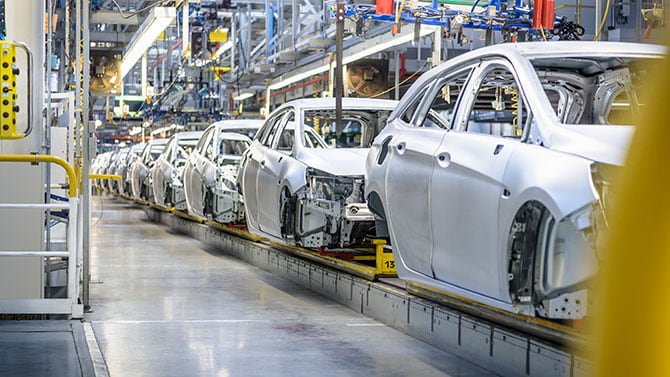How do Swiss companies in passenger and freight transport view automated driving? What impact will this development have on industry players? These and other questions were answered by 73 surveyed business leaders from the passenger and freight transport sectors. We have summarised their assessments, along with those of other industry experts: giving you an overview of opinions within the industry regarding automated driving and examining the topic from a business perspective.
Our findings In a nutshell
Notable differences emerge, however, between passenger and freight transport, as well as within subsectors such as public transport and less-than-truckload (LTL) transport. However, there is consensus on one point: consistent customer centricity remains the key to the success of new business models.
Automated driving also offers significant cost-saving potential. Of those who provided an estimate, 25 % expect to save over 20 % in operating costs. To realise this potential, companies must make targeted adjustments to various components such as data management, physical infrastructure and operational processes.
Companies must ensure that the upcoming transformation is socially responsible with respect to their workforce. Of those who responded, 66 % believe that the role of driving personnel will change thanks to automated systems. Measures to further develop employee competencies across various business areas are therefore essential.
Starting point
Results
Varying levels of engagement
The study results reveal a significant disparity in the engagement with automated driving. Of the participants surveyed, 29 % reported that they have not or have barely engaged with the topic so far. Notably, more participants from the freight transport sector (37 %) have not or have barely considered automated driving compared with those from the passenger transport sector (26 %).
Few dare to implement
Only a very small number of companies are gradually integrating automated vehicles into their fleets (4 %), training their employees on the topic (8 %) or actively recruiting new specialists (4 %). This contrasts with the many companies that have already conducted strategic or operational analyses (47 %) or evaluated the impact on their business models (37 %). The differences are particularly pronounced between segments, especially in the implementation of pilot projects: 44 % of respondents from the passenger transport sector are currently conducting tests, while no pilot projects were being carried out in the freight transport sector at the time of the survey. However, 13 % of respondents from the freight transport industry stated that tests are planned, and 3 % mentioned that a gradual introduction is in the planning stages.
An opportunity with significant cost-saving potential
Of those that participated in the study, 78 % view the introduction of automated driving as an opportunity, while only 11 % see it as a risk. A wide range of potential benefits is identified (see Figure 5). The three most frequently mentioned opportunities are reduced personnel costs (63 %), more efficient operational processes (56 %) and the development of new business models (55 %).
Of the study participants who responded to the question, 25 % estimate that they could save over 20 % of their operating costs through efficiency gains. 32 % expect to reduce their operating costs by 10 % to 20 %, and only 8 % expect no cost savings. Notably, 30 % did not answer the question, indicating the industry’s uncertainty about the concrete financial benefits of automated driving.
Cyber and dependency risks ahead of liability regulation
The study results indicate a strong awareness of the risks associated with automated driving. A total of 79 % of respondents consider cyber risks to be a serious issue, as the introduction of automated vehicles creates new vulnerabilities for cyber attacks. Additionally, 52 % see a risk of becoming dependent on technology providers.
Only 23 % of respondents view the challenging profitability of new business models as a risk; 22 % see the complex adjustments at the process and system level as risks. This optimistic assessment reflects the respondents’ confidence in the opportunities that automated driving presents for business and operational models.
Outlook and recommendations
This study reveals clear differences in the readiness and maturity of companies for automated driving as both a technological and transformational catalyst. The majority of respondents see attractive opportunities in it, including efficiency gains, cost reductions and new revenue streams. To fully realise this potential, targeted actions are necessary, which should vary depending on the company and segment. The evolving regulatory framework, which will advance with the AFV from the first quarter of 2025, offers companies the opportunity to engage with the topic in a structured way, form partnerships and implement initial measures.
Download the survey
https://pages.pwc.ch/core-asset-page?asset_id=701Vl00000GOHzfIAH&embed=true&lang=en
About the survey
This study includes an industry-wide survey of 73 companies in the passenger and freight transport sector. We have enriched the study results with insights from five interviews with experts in automated driving and industry representatives, incorporating their experiences in the design and implementation of such projects.
Our questionnaire includes five questions for categorising the study participants (e.g., market segment or position in the company) and 22 content-related questions focusing on the strategic view on automated driving, the company's maturity level, opportunities and risks, as well as the impact on the operational model and day-to-day business.
Our experts
Gabriele D'Achille
Director, Consulting and Head of Transportation and Logistics, PwC Switzerland
+41 58 792 76 64










